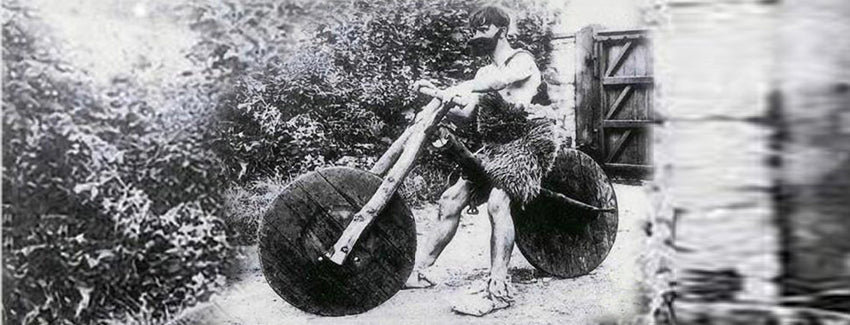| Tires are what keeps your motorcycle from running smoothly and safely. That little bit of rubber is what keeps you sane, because if you were riding like they used to in the beginning, with metal tires (source), you would be vibrating and bouncing like in a bouncy castle. | ||
| But motorcycle tires are not only there for our comfort; they are essential for our safety, more than car tires. Cars have four wheels (usually), so if one or two tires are not to spec, you should be alright, unless you drive way too fast. But on a motorcycle, one bad tire means 50% less contact surface that is in good shape. And that is very dangerous. | ||
|
|
||
| So you will need to pay a lot of attention to your tires, more than any other part of your bike. Here are a few things you need to know about motorcycle tires. | ||
| 1. | Language: Okay, this is more an anecdotal fact, but in the United Kingdom, tires are spelled tyres. Nothing separates two countries as much as a common language. | |
| 2. | Size: The size of the tire is vital. You can get smaller or bigger tires, but you really need to get the tires specified by your manufacturer. You don't need to get the same tire brand, but get the right size. | |
| 3. | Speed Rating: Click here to read this blog article we wrote about the ratings of your tires. Never get tires that have a too low speed rating for your bike, unless you don't mind having accidents. | |
| 4. | Tire Pressure: This is essential, since too much or too little will cause your motorcycle from behaving badly, even unsafely. Too little will also increase your fuel bill, since under-inflated tires make your bike run inefficiently. Check you bike's manual for the right pressure, and make sure you change the pressure if you are riding with a pillion and/or cargo. | |
| Best yet, get a small digital pressure reader so you can quickly check the tire pressure before setting off. And remember, check your tire pressure when the tires are cold, not warm. | ||
| 5. | Tire Wear: An obvious one, but check the tire wear regularly. A tire that is wearing down becomes a danger, since their adherence to the road gets less and less. In other words, the tires will start slipping when you take a curve, or under sustained braking. | |
| A worn tire also effects your performance and mileage. You'll need more engine power, therefore more gasoline to reach the same miles you would with proper tires. Obviously if your tires still has chicken strips on them, don't worry (yet). | ||
| 6. | Valve Stems: Make sure you have covered the tire's valve stems. Sound maybe crazy, but if you don't you stand a big chance of ending your ride with a flat tire. That is because if air is going to escape, chances are it will through the valve stem. | |
| And remember, nowadays you can buy electronic valve stems that actually show you on a small display what your current tire pressure is. Very handy and safe. No daily checking of your tire pressure. | ||
| 7. | Break-In: In contrast with car tires, motorcycle tires should be broken in. The reason for that is that motorcycle tires are quite slippery for the first 100 to 150 miles. So you'll need to make sure you don't put too much pressure on them when taking curves, and when braking, don't do it too violently. Make sure the silicon layer has worn off properly. One quick way is to check the chicken strips. Click here to read what we wrote about chicken strips. | |
| 8. | Warm-Up: When leaving for your ride, remember that your tires need to warm up before they reach perfect working conditions. Like with motorcycle racing, start slow, maybe zigzag a bit to warm them up. After a few minutes they should have reached the correct temperature. (note: tire pressure gadgets that are mounted on your tire valve stems usually also show the tire temperature, so a handy purchase). | |
| As the saying goes keep the rubber side down (and the shiny part up). Good care of your tires will make your ride smooth and safe. | ||
8 Things You Need To Know About Tires

Tags: Motorcycle events





